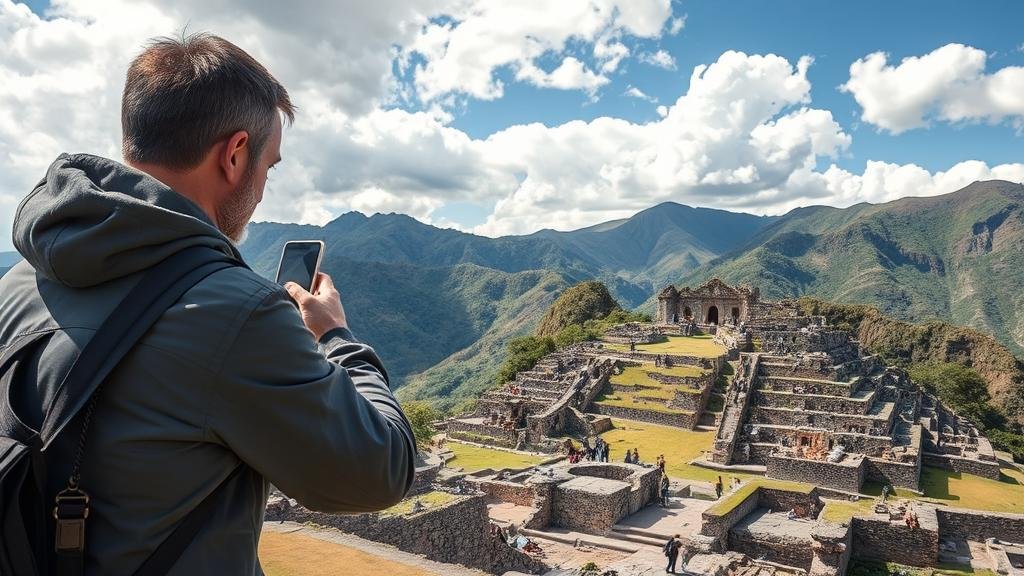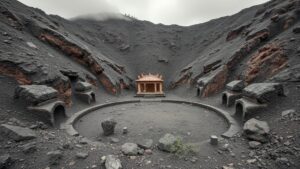Investigating the construction techniques behind the megalithic walls of Sacsayhuamán in Peru.
Investigating the Construction Techniques Behind the Megalithic Walls of Sacsayhuamán in Peru
Sacsayhuamán, a remarkable archaeological site situated just outside Cusco, Peru, is renowned for its massive, finely crafted stone walls. Believed to have been built in the 15th century during the height of the Inca Empire, Sacsayhuamán showcases sophisticated construction techniques that continue to intrigue archaeologists and historians alike. This article delves into the methods employed in constructing these megalithic walls, highlighting their engineering prowess and the cultural significance behind their creation.
Historical Context
The construction of Sacsayhuamán began during the reign of Pachacuti Inca Yupanqui, around 1438 AD. site served both a military and ceremonial purpose, reflecting the architectural ambitions of the Inca Empire. The walls, which incorporate a zigzag pattern, stand as a testament to the complex social and political organization of the Incas; they were built to protect the city of Cusco and symbolize Inca dominance.
Stone Selection and Transport
One of the most notable aspects of Sacsayhuamáns construction is the choice of stone. The megaliths are primarily composed of limestone, quarried from the nearby hills. largest stones can weigh over 200 tons, demonstrating remarkable engineering capabilities for their transport and positioning.
- Quarrying: The Incas utilized rudimentary tools, such as hardened stone chisels and wooden wedges, to extract the stones. They would soak the wedges with water, allowing them to expand and fracture the limestone.
- Transport: The Incas likely transported stones using sledges and rollers. Recent studies suggest that they may have also poured water on the ground to create a lubricated surface, reducing friction.
Construction Techniques
The sheer precision of Sacsayhuamáns masonry is astounding. walls are characterized by their dry-stone construction, where stones are fitted together without mortar. This technique enhances seismic resistance, vital for a region susceptible to earthquakes.
- Cutting and Fitting: Each stone was uniquely shaped to interlock with its neighbors. The Incas employed trial and error, utilizing simple yet effective surveying tools like plumb bobs and levels.
- Stones of Different Shapes: The walls feature stones of various shapes and sizes, carefully arranged to minimize gaps. This not only added stability but also aesthetic appeal.
- Adaptive Techniques: Environmental adaptation played a role; stones were positioned to account for gravitational forces, which helped the wall withstand the elements over centuries.
Cultural Significance
The construction of the Sacsayhuamán walls was not merely functional. It represented a complex interplay of cultural beliefs, social hierarchy, and military prowess. The site was tied to religious and ceremonial activities, often serving as a backdrop for significant events.
- Symbolism: The zigzag formation is thought to symbolize the puma, an important figure in Inca mythology and a representation of strength and power.
- Integration with Surroundings: The layout of Sacsayhuamán demonstrates the Incas deep connection with their environment, utilizing the natural landscape to enhance the functionality and aesthetic of their construction.
Modern Implications
The study of Sacsayhuamán has implications beyond archaeology. It offers insights into ancient engineering practices that can inform contemporary construction techniques, particularly in regions prone to seismic activity. Also, it highlights the need to preserve such historical sites against environmental degradation and urban development.
Conclusion
Investigating the megalithic walls of Sacsayhuamán reveals a sophisticated understanding of construction techniques and engineering that belies the era in which they were built. The sites enduring legacy as an archaeological marvel underscores the ingenuity of the Inca civilization and its impact on modern society. For visitors and scholars alike, Sacsayhuamán serves as a reminder of the rich cultural heritage and technological advancements of ancient Peru.
Actionable Takeaways
- Visiting Sacsayhuamán offers a unique opportunity to appreciate ancient engineering and cultural significance firsthand.
- Enhanced knowledge of these structures can inspire modern architectural practices, particularly in terms of sustainability and resilience.
- Advocating for the preservation of such historical sites is crucial for future generations to learn about and appreciate their heritage.



